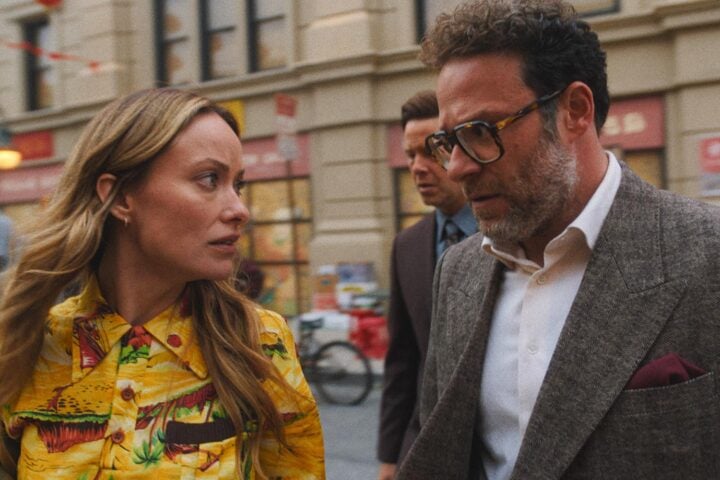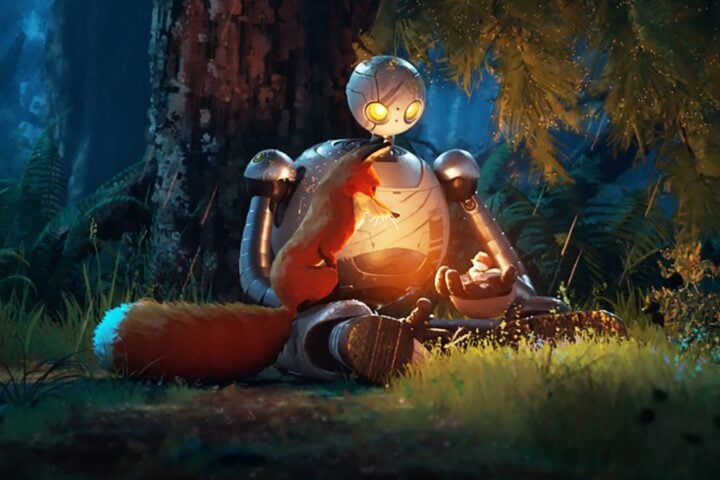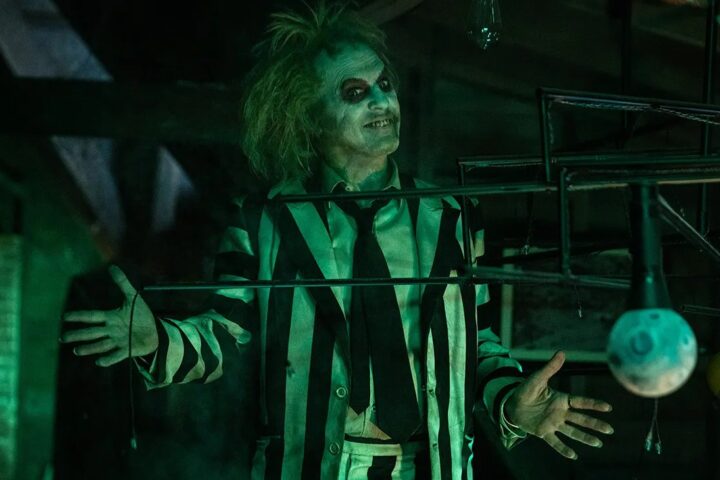With Elemental, Pixar’s infrastructure drama is here at last. Yes, there’s a Romeo and Juliet-inspired love story, a tale as old as time of immigrants fighting to sustain their hard-won stability, and a parable about accepting and celebrating human—or rather, atomic—differences packed into the film. But Elemental’s plot is really driven by a buddy quest to follow the pipes and repair the leak responsible for causing increasingly frequent flooding in Fire Town, on the outskirts of Elemental City, a metropolis inhabited by the natural elements.
It’s not in Elemental’s best interests that its characters—and thus, its basic concept—are so difficult to describe. The fire people are some sort of humanoid flames and the water people humanoid drops, but not all fire or water in this world is sentient (it’s the regular kind of water that’s causing those pesky pipes to overflow). The film derives most of its liveliest sequences from the scientific properties of the elements, but the basic rules of this world remain foggy (no pun intended). For example, how do these characters keep their form and not just start splashing or burning into each other when they touch? And when earth elements walk on the ground, how do they make sure they’re not trodding on their friends and family?
Ember Lumen (Leah Lewis) is a fire girl whose parents (Ronnie del Carmen and Shila Ommi) emigrated from Fireland shortly before she was born. And despite the discrimination they’ve faced from the other elements, the family’s built a thriving convenience store in Fire Town that Ember’s set to soon inherit. Pity, then, that Ember isn’t great at customer service.
Ember’s anger management problem keeps boiling up at the store’s counter, and when one of her, well, inflammatory explosions sends Wade Ripple (Mamoudou Athie) soaring out of a burst pipe and into Ember’s basement, an enemies-to-friends-to-lovers arc is swiftly set into motion. But will Ember’s family ever accept her relationship with Wade, a city inspector grieving his father? After all—yes, say it with me now—fire and water do not mix.
Elemental offers some sweetly animated moments as Ember and Wade’s tentative relationship unfolds. The film is best in a delicate montage as the pair show off the ways that they can play with refracted light, Ember changing the colors of the minerals she hops between and Wade skipping over a fountain to create a rainbow. But, elsewhere, the world-building is too hasty and too vague to make even the typically Pixarian visuals generate a sense of awe.
Easter Eggs and sight gags are a cornerstone of the Pixar universe, and there are some small delights to be found throughout Elemental, even if it’s easy to imagine the writers checking off their elemental puns from some brainstorm-generated master list. (“Get off your ash” could have been left on the cutting room floor.) Particularly charming is a scene at a sports arena in which clouds compete at Air Ball and Wade leads rows of water elements in a literal wave.
But if toys helped kids understand their imaginations better, monsters aided them in excavating their fears, and emotions come to life allowed them to make sense of their feelings, it’s not quite evident what Elemental’s use of fire and water will illuminate. As much as all Pixar films may convey potent metaphorical messages for the human world, Toy Story, Monsters, Inc., and Inside Out wouldn’t work, respectively, without toys, monsters, and emotions. That’s the point. But there are plenty of ways to tell a “fire and water don’t mix” story without literalizing fire and water. Which is to say that Elemental doesn’t make enough of a case for its own existence.
As for those metaphors, Elemental has one Guess Who’s Coming to Dinner scene in which Ember meets Wade’s family that suggests the film is really about racial or ethnic difference. (After all, the fire elements unnecessarily speak with Eastern European accents.) But there’s also a story here about class privilege and how the immigrant experience shapes it. Since he’s never had to worry about keeping his family afloat, Ember resents Wade’s insistence that she can take up a glass-blowing design internship (she’s skilled, of course, at melding metals with her breath) and give up the family shop. That’s a lot to pack in, especially when the crowded storytelling distances the allegory too far from the human experience that it’s meant to reflect.
Following in the footsteps of Pixar’s recent Soul, Elemental doesn’t seem likely to hold the attention of young audiences. The concerns of Ember and Wade’s grown-up romance may bore kids and the sexual innuendos that have occasionally appeared as brief winks for the adults feel far too forward here (at one point, Ember’s father celebrates that her departure will leave more time for “hanky-panky” with his wife). Pixar continues a steady drift away from communicating on the same wavelength with the audiences that matter most.
And especially since Elemental opens just a week after smoke from Canadian wildfires plunged much of the East Coast into murky, hazardous tailspin, the film’s silence on the environment seems like a missed opportunity. A sharper Pixar film might have offered a story for young viewers to imagine a world powered by nature’s resources as one more meaningfully connected to their own. Much like those cloudy competitors in the Air Ball arena, Elemental does a whole lot of huffing and puffing but, at its core, feels no more grounded than a gentle wisp of air.
Since 2001, we've brought you uncompromising, candid takes on the world of film, music, television, video games, theater, and more. Independently owned and operated publications like Slant have been hit hard in recent years, but we’re committed to keeping our content free and accessible—meaning no paywalls or fees.
If you like what we do, please consider subscribing to our Patreon or making a donation.






“make sure they’re not trodding on their friends” Trodding? What language is this?I’m wenting for a walk…